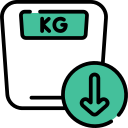Q. How to detect and manage early diabetes at home using simple lifestyle changes and daily monitoring tips effectively?
Doctor Answer is medically reviewed by SecondMedic medical review team.
How to Detect and Manage Early Diabetes at Home Using Simple Lifestyle Changes and Daily Monitoring Tips Effectively?
-
Recognize Early Symptoms:
Watch for signs like frequent urination, excessive thirst, unexplained fatigue, slow-healing wounds, and sudden weight changes. -
Check Blood Sugar Regularly:
Use a glucometer at home to monitor fasting and post-meal blood sugar levels consistently. -
Maintain a Healthy Diet:
Include whole grains, fresh fruits, vegetables, lean proteins, and healthy fats while avoiding excess sugar and refined carbs. -
Control Portion Sizes:
Eat smaller, balanced meals throughout the day to keep blood sugar stable. -
Stay Physically Active:
Engage in daily activities like brisk walking, cycling, or yoga for at least 30 minutes to improve insulin sensitivity. -
Stay Hydrated:
Drink plenty of water to help maintain optimal blood sugar levels and prevent dehydration. -
Manage Stress Levels:
Practice deep breathing, meditation, or mindfulness to reduce stress, which can affect blood sugar control. -
Get Quality Sleep:
Aim for 7–8 hours of restful sleep to support hormonal balance and metabolism. -
Avoid Smoking and Alcohol Excess:
Both can raise blood sugar and increase the risk of diabetes-related complications. -
Track Your Progress:
Keep a health diary of your meals, exercise, and blood sugar readings to notice patterns and adjust accordingly. -
Seek Medical Advice When Needed:
If blood sugar remains high despite lifestyle changes, consult a doctor for timely guidance and treatment options.
Conclusion:
By understanding How to detect and manage early diabetes at home using simple lifestyle changes and daily monitoring tips effectively?, you can take control of your health and prevent long-term complications.
Related Questions
-
Cardiology Heart disease How does atrial septal defect cause hyp
-
What is Congenital Heart Disease, and how does it differ from acquired heart diseases? | Secondmedic
-
How Can I Lower My Blood Pressure Naturally? | Secondmedic
-
What lifestyle changes can individuals with atrial fibrillation make to manage their condition? | Secondmedic
-
Cardiology Heart disease Why are the beta blockers contraindicat











